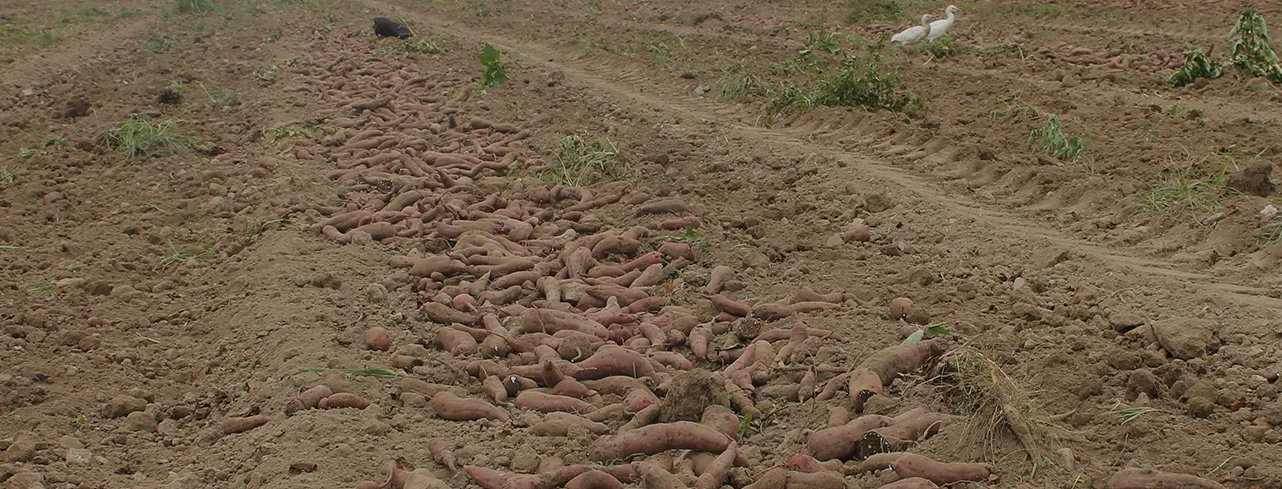Hansen sweet potato™
The fundamentals
Produces shades:
Latin name: Ipomoea batatas
Pigment: Anthocyanins
E-number: E163
Five facts about Hansen sweet potato
How Hansen sweet potato is grown
Like all sweet potatoes, Hansen sweet potato can be propagated from seeds or tubers. The crop cycle is long (6-7 months) so the root can gather a high concentration of anthocyanins. Crops are planted monthly, and acreage adjusted according to our long-term forecasts.
All fresh fruits and vegetables begin to degrade soon after harvest, and anthocyanins are particularly fragile. Our factory is placed in the heart of the growing area so we can stabilize the pigments immediately after harvest.
Harvest calendar and growing areas
Sweet potatoes are a common vegetable. The top 10 commercial growing regions are in China, Africa and the US. Our Hansen sweet potato is harvested year-round.
Caring for our planet
Hansen sweet potato is cultivated with a minimum of chemicals and mechanical handling. Combined with crop rotation, this reduces the negative effects on the soil, the crop and workers. We also help farmers limit water consumption by optimizing irrigation throughout the crop cycle and defining precise ways to wash the crop before delivery to our factory.
Hansen sweet potato gives a rural local economy an enormous boost
We engage with a network of farmers on long-term contracts, thereby securing them a higher margin compared to subsistence crops, as well as continuous technical support.
Our factory in the heartland creates jobs in production and quality control as well as periphery jobs in transport, maintenance and more.
An award winning, clean label innovation
Hansen sweet potato was launched in late 2018 and won innovation awards in Europe, USA and Latin America.
What you should know about anthocyanins from Hansen sweet potato
Oterra's stable, industry-leading formulations allow you to benefit from all of the advantages of Hansen sweet potato as a natural food color while minimizing any intrinsic challenges associated with this vegetable.
Hansen sweet potato™ anthocyanins are water soluble and are less sensitive to oxidation and pH than other anthocyanins.
They are the most optimal clean label replacement for carmine
Natural Strengths
Heat and light stable
Performs well in acidic applications
Best anthocyanin for maintaining red/pink color in products pH >5
No to low off-flavor
Natural Challenges
Changes in pH cause shade shift
Sensitive to oxygen, metal ions and vitamins

